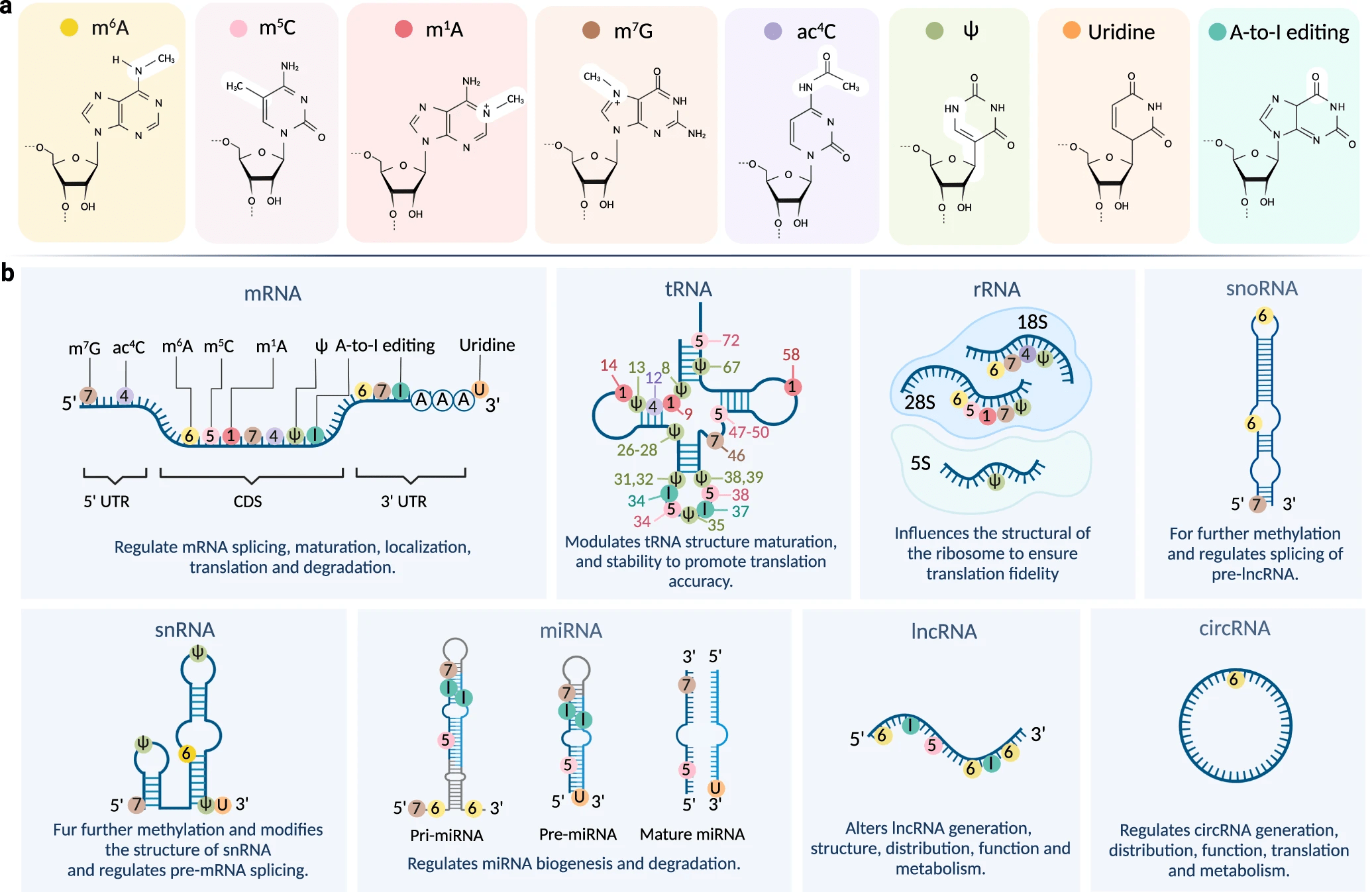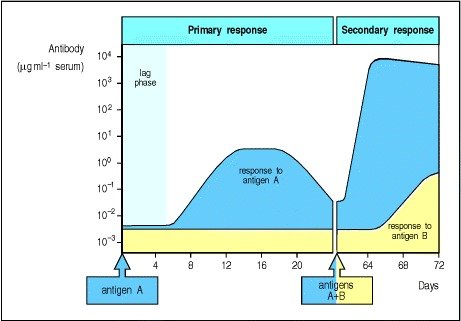

FULL CLAIM: “Despite everything we’ve been told, RNA-based COVID-19 injections were manufactured with modified RNA—not messenger RNA (mRNA)”; “The vaccine and booster modRNA will continue to produce spike protein (for weeks or even months, which is entirely different from a natural infection), as our cell machinery (e.g., the enzyme RNase) cannot destroy the artificial modRNA.”; “Studying the open-access databases—including those in the United States, Europe, and the UK—on COVID-19 vaccine adverse effects, one can see that these risks have become real-life side effects for people who received the COVID-19 injections.”
REVIEW
On 27 July 2023, The Epoch Times published an article by Klaus Steger, a molecular biologist who specializes in the gene regulation of sperm development, carrying the headline “COVID-19 Vaccines and Boosters Were Never Made With mRNA”. The article has since received more than 4,500 user interactions on Facebook, according to the social media analytics tool CrowdTangle.
Steger retired from his professorship at the University of Giessen in 2023 and appears to be currently active in the Grassroots Democratic Party of Germany (“Die Basis” in German). This political party is associated with the German “Querdenker” movement, an amalgam of individuals holding a mix of anti-vaccination, COVID-19 denialist, and far-right extremist views. The party counts microbiologist Sucharit Bhakdi, who has promoted misinformation about COVID-19 vaccines, among its ranks.
Right off the bat, the article’s headline propagates incorrect information. It is based on Steger’s argument, spelled out in greater detail in the article, that the RNA used in the COVID-19 mRNA vaccines had to be modified, thus making it “modified RNA” or modRNA, and not “messenger RNA”.
But this argument discards the standard definition of messenger RNA and distorts the meaning of the term modified RNA (modRNA). Messenger RNA is any RNA used as a template for making a protein, which is what the RNA in the vaccines do: provide the blueprint for the SARS-CoV-2 spike protein. And the term modRNA is used by scientists to refer to nucleoside-modified messenger RNA.
In the case of COVID-19 mRNA vaccines, researchers modified the messenger RNA to improve its stability, its efficiency in protein synthesis, and its ability to generate an effective immune response[1,2]. On top of this, modifications were also made to lock the resulting protein in the “prefusion” state. This prevents the spike protein from interacting with cell receptors and improves safety.
Steger’s article lends readers the impression that modified RNA is inherently artificial. However, our cells modify mRNA all the time (see Figure 1) [3,4].

Figure 1. Cells make various modifications to RNA to regulate RNA function and gene expression. Row A depicts eight types of modifications that RNA can undergo in the cell. From left to right: m6A (N6-methyladenosine), m5C (5-methylcytosine), m1A (N1-methyladenosine), m7G (7-methylguanosine), ac4C (N4-acetylcytidine), ψ (pseudouridine), A-to-I editing (adenosine-to-inosine RNA editing). Row B shows where different types of modifications can be found on various types of RNA. Source: Cui et al.[4]
One modification used by COVID-19 vaccine mRNA is a form of pseudouridine, called N1-methylpseudouridine, which makes mRNA less likely to be targeted for destruction by the immune system, thus improving its stability[5]. As Figure 1 shows, our cells also incorporate pseudouridine into mRNA. In fact, the use of N1-methylpseudouridine in the vaccine mRNA was inspired by the naturally-occurring pseudouridine[6].
The tack of claiming that the COVID-19 vaccines don’t actually contain what authorities say they contain is a common feature in COVID-19 vaccine misinformation. Health Feedback has covered a range of viral claims exhibiting this feature, such as the claims that the vaccines contain anything from graphene oxide to microchips and magnets to a cancer-causing virus. All of these claims are false.
Steger’s claim that vaccine mRNA will lead to continued spike protein production “for weeks or even months” also isn’t novel. Health Feedback debunked the same claim in previous reviews. And as this Science-Based Medicine article pointed out, if spike protein was continually produced over the long term due to mRNA vaccination, it would have been unnecessary for people to receive two doses of a COVID-19 mRNA vaccine, rather than one. Steger offered no evidence to support his claim.
In addition, the language of Steger’s article plays on the appeal to nature, contrasting “natural” infection with “artificial” mRNA in the COVID-19 mRNA vaccines and portraying infection as safer and preferable to vaccination. However, scientific evidence on COVID-19 and COVID-19 vaccines shows that vaccination is safer than infection, as we explain below.
Infection exerts more detrimental effects on the body than vaccination; mRNA vaccines contain no virus, vaccine mRNA doesn’t replicate
In the article, Steger implied that vaccination would lead to more disruptive and harmful effects in the body. One of the ways he did so was to highlight that the SARS-CoV-2 virus can only infect cells with the correct receptor (in this case, ACE2), whereas the vaccine mRNA carried by lipid nanoparticles can enter any cell.
On the contrary, infected cells are hijacked to make more virions (the complete infectious viral particle), which then go on to infect more cells and make more virions. In this case, cells are forced to churn out all the different proteins needed to assemble the entire virus, not just a single protein.
In contrast, mRNA vaccines lead to the production of just one protein, they contain no virus, and vaccine mRNA doesn’t replicate like the virus does, thus making its effects more limited. These differences mean that vaccination doesn’t damage cells the way a viral infection does and the effects of vaccination are less disruptive than that of infection.
Steger wrote that “Our immune system’s job is to destroy a cell that has been infected with a virus to prevent replication of the virus and subsequent infection of new cells. Notably, our immune system will stop the process once that battle is won (typically, within a few days)”.
While it is true that our immune system acts to destroy virus-infected cells, this statement leaves out relevant information about the timescale needed for the body to effectively respond to a viral infection. The antiviral response depends heavily on the adaptive immune system. The adaptive immune response against a virus requires several days to mature if the virus is new to the immune system (see Figure 2). In fact, this is why individuals who receive the COVID-19 vaccines are considered to receive full protection only one to two weeks after vaccination, not after a few days.
Moreover, not everyone manages to overcome infection. Worldwide, nearly seven million people have died of COVID-19 to date.

Figure 2. The typical antibody response to antigens. The primary response shows antibody production kicks in only about one week after the first exposure to antigen A. Upon a repeat exposure (secondary response), a more rapid response that produces a greater amount of antibody against antigen A appears. Source: Janeway et al.[7]
Moreover, Steger’s implication that spike protein production from infection is over in a few days and self-limiting is also untrue. A study in 31 patients with long COVID found that small amounts of spike protein remained in the blood months after diagnosis, and up to a year in some patients[8]. The findings suggest that the virus SARS-CoV-2 could remain in the body long after the initial infection and continue to replicate.
All things considered, COVID-19 carries greater risks than COVID-19 vaccination
Steger’s claims implying that infection is safer than vaccination isn’t borne out by the evidence.
He cited vaccine adverse event reports as evidence of the risks of COVID-19 vaccination. As Health Feedback explained in previous reviews, this is misleading, as vaccine adverse event reports alone cannot prove the event was due to the vaccine.
While the COVID-19 mRNA vaccines are associated with a slightly elevated risk of heart inflammation (myocarditis), plenty of evidence shows that COVID-19 leads to a greater risk of heart complications than vaccination.
A study on the Pfizer-BioNTech COVID-19 vaccine published in the New England Journal of Medicine analyzed data from more than 1.7 million vaccinated people and more than 230,000 people who were infected with SARS-CoV-2[9]. It reported that while vaccination increased the risk of myocarditis and pericarditis about three-fold relative to unvaccinated people, SARS-CoV-2 infection increased this risk even more. Infected people had an 11-fold higher risk of myocarditis and pericarditis relative to uninfected people.
Another study, which included more than 42 million people in England, also reported that the risk of myocarditis increased after vaccination, “but was lower than the risks after a positive SARS-CoV-2 test before or after vaccination”[10].
A study which analyzed healthcare records of more than 10 million U.S. veterans reported that individuals who had COVID-19 were more prone to developing cardiovascular problems for at least 12 months after infection[11].
And in patients with heart failure, a study in Denmark found that receiving the COVID-19 mRNA vaccines didn’t increase the risk of worsening heart failure, myocarditis, or all-cause mortality[12].
On top of this, getting COVID-19 also raises a person’s risk of other complications, such as blood clotting disorders[13-18] and long COVID.
On balance, COVID-19 is riskier than vaccination. Studies have shown that COVID-19 vaccines are effective at reducing the risk of severe disease and complications[19-20].
Conclusion
Scientific evidence doesn’t support Steger’s implication that infection is relatively benign and safer than vaccination. COVID-19 carries greater risks of health complications and death compared to COVID-19 vaccination. It is false to claim that the COVID-19 mRNA vaccines don’t actually contain messenger RNA or mRNA. They contain messenger RNA that has been modified to improve its stability. Such modifications are common in nature and aren’t intrinsically artificial. These modifications also don’t prevent vaccine mRNA from being degraded in the body over time.
REFERENCES
- 1 – Walsh et al. (2020) Safety and Immunogenicity of Two RNA-Based Covid-19 Vaccine Candidates. New England Journal of Medicine.
- 2 – Baden et al. (2020) Efficacy and Safety of the mRNA-1273 SARS-CoV-2 Vaccine. New England Journal of Medicine.
- 3 – Boo and Kim. (2020) The emerging role of RNA modifications in the regulation of mRNA stability. Experimental & Molecular Medicine.
- 4 – Cui et al. (2022) RNA modifications: importance in immune cell biology and related diseases. Signal Transduction and Targeted Therapy.
- 5 – Nance and Meier. (2021) Modifications in an Emergency: The Role of N1-Methylpseudouridine in COVID-19 Vaccines. ACS Central Science.
- 6 – Karikó et al. (2005) Suppression of RNA recognition by Toll-like receptors: the impact of nucleoside modification and the evolutionary origin of RNA. Immunity.
- 7 – Janeway et al. (2001) Principles of innate and adaptive immunity. Available from: https://www.ncbi.nlm.nih.gov/books/NBK27090/
- 8 – Swank et al. (2023) Persistent Circulating Severe Acute Respiratory Syndrome Coronavirus 2 Spike Is Associated With Post-acute Coronavirus Disease 2019 Sequelae. Clinical Infectious Diseases.
- 9 – Barda et al. (2021) Safety of the BNT162b2 mRNA Covid-19 Vaccine in a Nationwide Setting. New England Journal of Medicine.
- 10 – Patone et al. (2022) Risk of Myocarditis After Sequential Doses of COVID-19 Vaccine and SARS-CoV-2 Infection by Age and Sex. Circulation.
- 11 – Xie et al. (2022) Long-term cardiovascular outcomes of COVID-19. Nature Medicine.
- 12 – Sindet-Pedersen et al. (2023) Risk of Worsening Heart Failure and All-Cause Mortality Following COVID-19 Vaccination in Patients With Heart Failure: A Nationwide Real-World Safety Study. Circulation: Heart Failure.
- 13 – Wichmann et al. (2020) Autopsy Findings and Venous Thromboembolism in Patients With COVID-19: A Prospective Cohort Study. Annals of Internal Medicine.
- 14 – Douillet et al. (2021) Risk of symptomatic venous thromboembolism in mild and moderate COVID-19: A comparison of two prospective European cohorts. Thrombosis Research.
- 15 – Raisi-Estabragh et al. (2022) Cardiovascular disease and mortality sequelae of COVID-19 in the UK Biobank. Heart.
- 16 – Knight et al. (2022) Association of COVID-19 With Major Arterial and Venous Thrombotic Diseases: A Population-Wide Cohort Study of 48 Million Adults in England and Wales. Circulation.
- 17 – Hippisley-Cox et al. (2021) Risk of thrombocytopenia and thromboembolism after covid-19 vaccination and SARS-CoV-2 positive testing: self-controlled case series study. BMJ.
- 18 – Taquet et al. (2021) Cerebral venous thrombosis and portal vein thrombosis: A retrospective cohort study of 537,913 COVID-19 cases. eClinicalMedicine.
- 19 – Notarte et al. (2022) Impact of COVID-19 vaccination on the risk of developing long-COVID and on existing long-COVID symptoms: A systematic review. eClinicalMedicine.
- 20 – Watanabe et al. (2023) Protective effect of COVID-19 vaccination against long COVID syndrome: A systematic review and meta-analysis. Vaccine.


